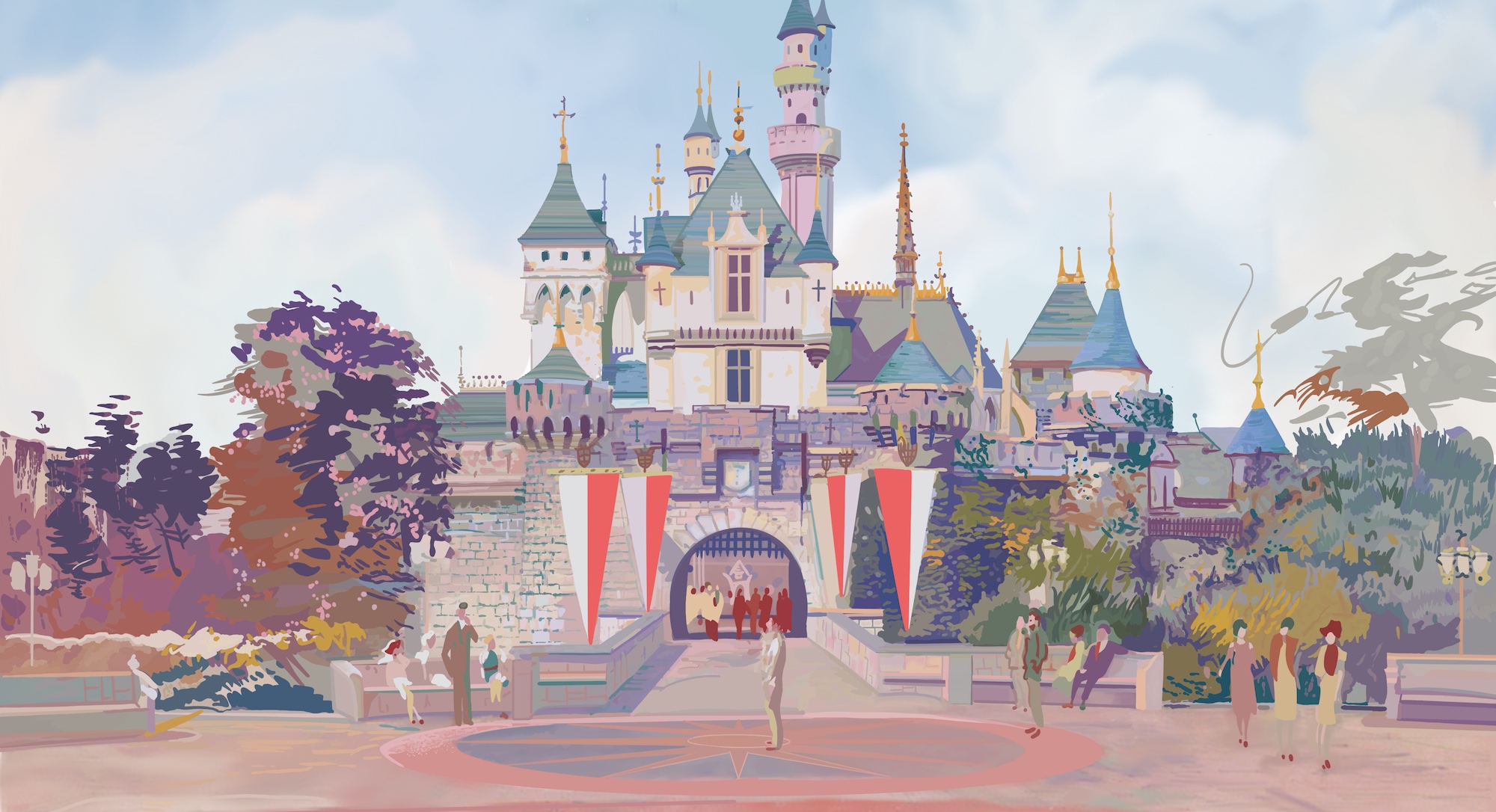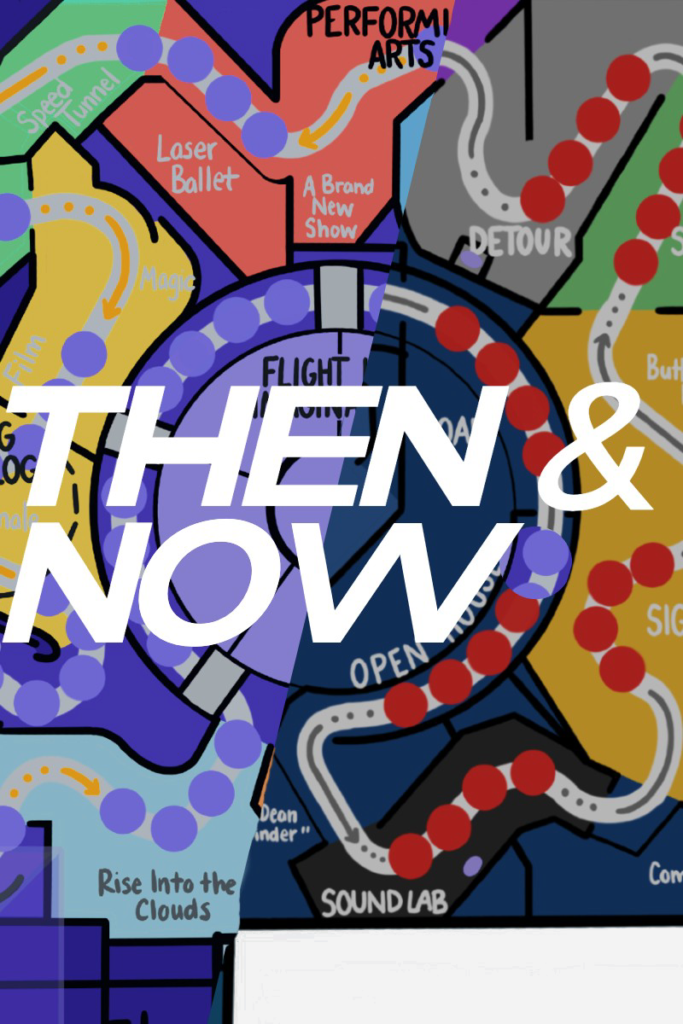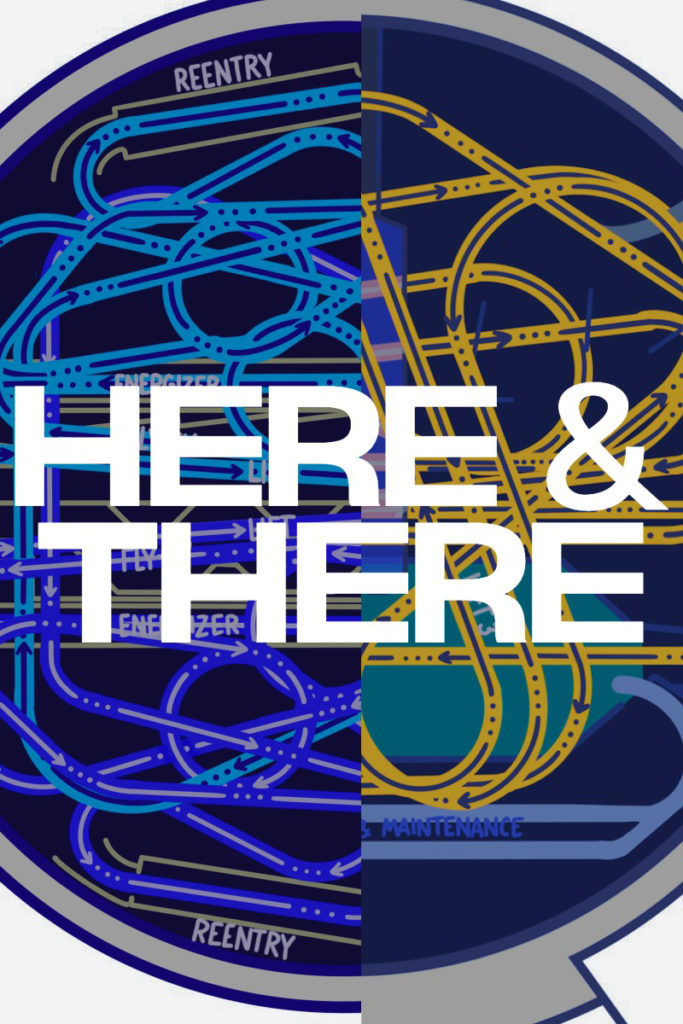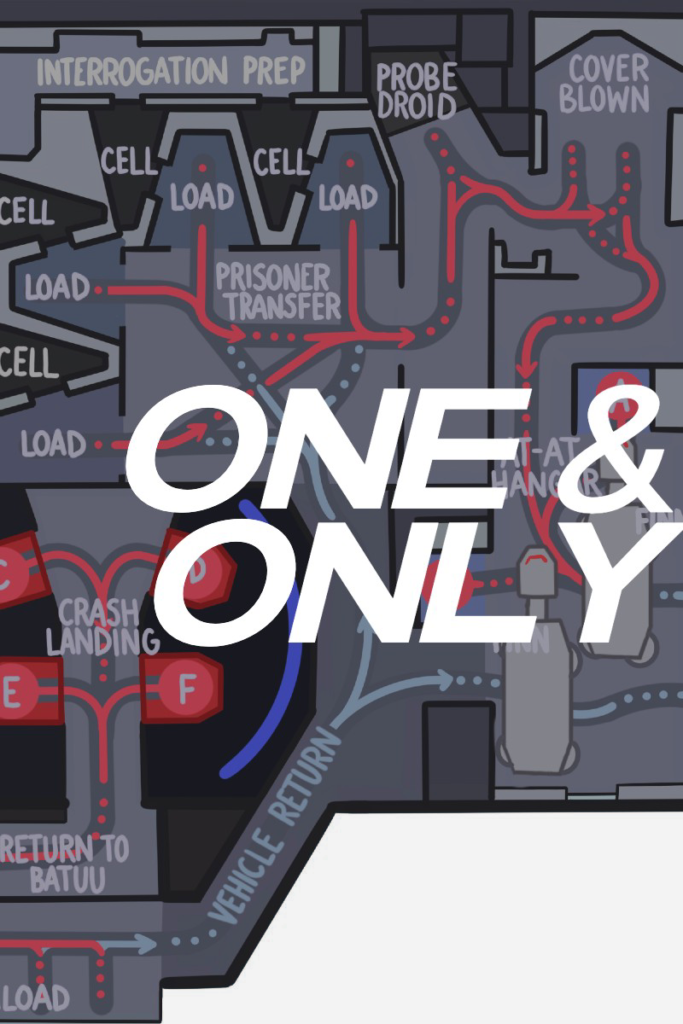In case this is your first visit to Park Lore, let me catch you up! For over a decade, I’ve been writing, assembling, and adding to an all-in-one-place collection of the stories behind the rides we love. From closed, classic Lost Legends to never-built Possibilitylands; the lessons learned from Declassified Disasters to the wonders that await inside Modern Marvels, this interconnected, in-depth collection is all about seeing the parks we love differently – all supported by Members instead of ads and clickbait!
Earlier this year, I launched a new initiative to “paint the picture” of theme park attractions… literally. So far, I’ve hand-illustrated about 100 ride layouts representing attractions across six countries! My first batch – THEN & NOW – explored how attraction designers re-use the same physical spaces to develop entirely unique experiences; then, the HERE & THERE collection saw how the same ride can be “translated” differently to new parks, new spaces, and even new cultures.
Along the way, you – yes, you – have made me cry happy tears by sharing these layouts on social media, using them in your own projects, and becoming supporting Members of this niche little quality-over-quantity, ad-free theme park storytelling project for even $2 / month.
Thanks to Park Lore’s supporting Members, I’m thrilled to release my third collection of hand-illustrated ride layouts: ONE & ONLY! This collection is all about celebrating the world’s Modern Marvels, industry-changing E-Tickets, and the “one-of-a-kind” attractions that populate Imagineering fans’ “bucket lists.” These historic, epic, beloved, unique attractions from parks around the globe are true icons, and I’m hoping that a glimpse at their layouts adds a whole new layer of context and appreciation for what designers are capable of bringing to life…
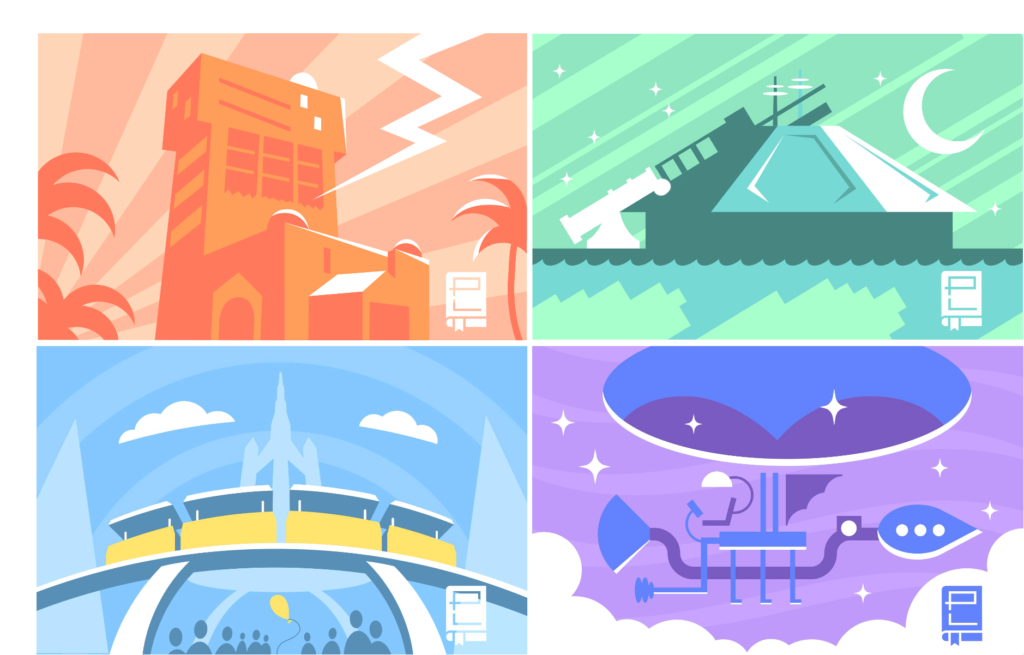
Before you go, a quick request! Each of the 100+ ride layouts you’ll find in these collections was hand-illustrated by me with a lot of time and love. I hope you zoom in, download, explore, and share them, but please be kind and cite, tag me (@themeparklore), and link to this story if you do!
Since Park Lore is ad-free (and clickbait-free!), I proudly make $0 in ad revenue. So if you appreciate Park Lore’s in-depth, interconnected theme park storytelling and analysis, consider becoming a Member for as little as $2 / month! Members can unlock rare concept art in every story, audio streams, 100+ Extra Features, and more!
1. Matterhorn Bobsleds
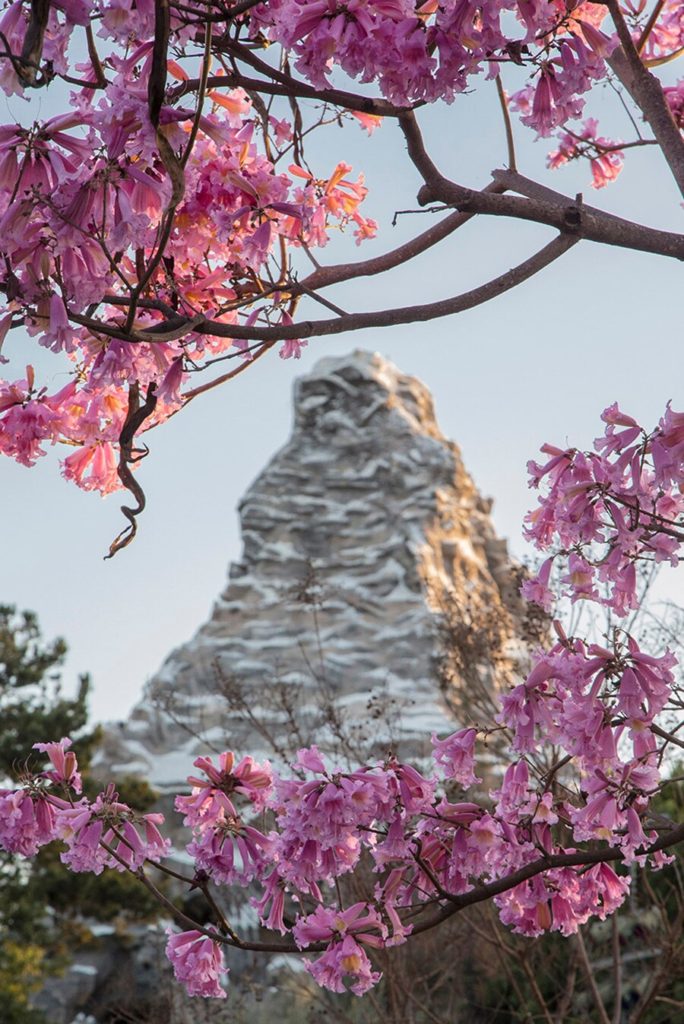
There’s no better ride to kick off our ONE & ONLY layout collection than Disneyland’s one-of-a-kind Matterhorn Bobsleds. As the story goes, development on the ride began when Walt – visiting the actual Matterhorn as part of the filming of The Third Man on the Mountain – sent a postcard of the peak to art director Vic Greene with just four words written on the back: “Vic. Build this. Walt.” Just like that, the first “Disney Mountain” was born.
The Matterhorn opened as a massive expansion of the four-year-old park’s Tomorrowland on June 14, 1959. (Two other rides – the Submarine Voyage and Disneyland Monorail – launched the same day. The three together were the first-ever rides requiring an “E-Ticket“.) It remains a Disneyland-exclusive to this day, giving it major historic milestone status among Disney Parks fans.
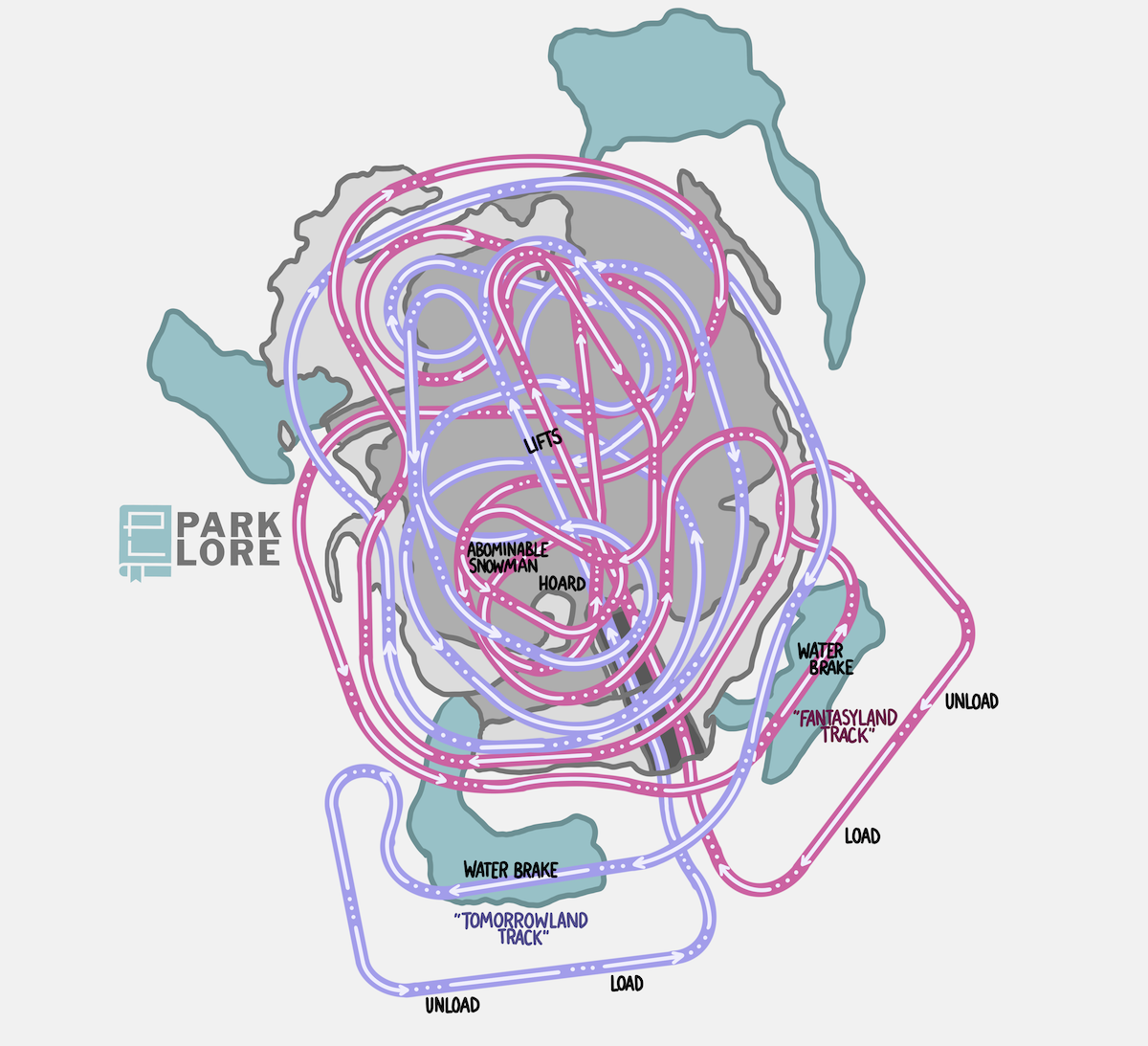
Developed by Arrow Dynamics, the Matterhorn Bobsleds was the world’s first modern steel roller coaster (meaning all that came prior are what we’d now call wooden coasters). It also came equipped with a never-before-imagined computer control system, whose block brakes meant that the ride could (safely) operate more than one train at a time without the risk of collision. The ride is made up of two separate but intertwined tracks (unofficially referred to as the “Tomorrowland Track” and the “Fantasyland Track” based on the side they load from), each of which provides a genuinely unique ride experience.
In 1978, the ride had the rare distinction of being “moved” from Tomorrowland to Fantasyland. Coinciding with the nominal switch, the mountain’s once-hollow interior was reshaped into icy caverns and glacial grottos for bobsleds (and the Lost Legend: The Skyway) to pass through. That’s also when the mountain gained its most famous resident: the Abominable Snowman who jump-scares riders as they slalom down and through the mountain.
2. TRON Lightcycle Power Run
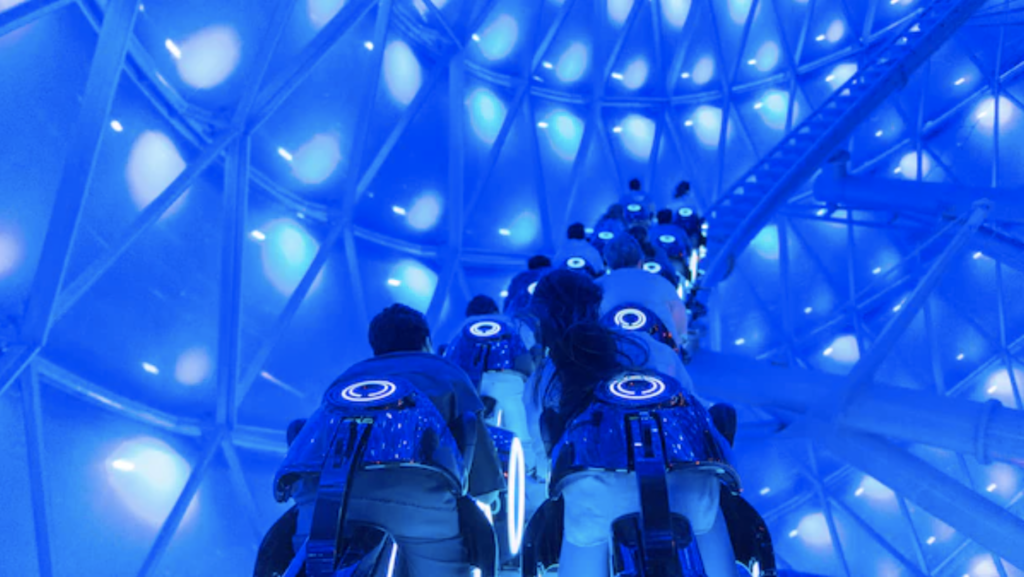
Ten years ago if you would’ve predicted that Disney’s next E-Ticket attraction would be based on 1982’s cult classic, early-CGI film TRON or even its moderately-successful 2010 sequel TRON: Legacy, you probably would’ve been laughed out of the room. Yet when Shanghai Disneyland opened in 2016, its new take on Tomorrowland centered on a TRON-themed roller coaster essentially replacing Space Mountain in the park’s lineup.
In many ways, it makes sense. While outer space still looms large in the general genre of futurism, the glowing, pulsating landscape of TRON‘s “Grid” holds up surprisingly well forty years after its debut as an embodiment of a digital landscape, and where our actual tomorrows probably reside. Plus, the films’ high-speed races on glowing “Lightcycles” lend themselves well to a theme park… and to “motorbike” trains developed by Disney’s go-to coaster manufacturer, Vekoma.

The Modern Marvel: TRON Lightcycle Power Run is a high-speed launched coaster that accelerates through a serpentine, outdoor “Upload Circuit” of hexagonal neon panels before diving into the Grid for a weaving, dipping race. (Cleverly, an illusion halfway through sees riders’ blue Lightcycles become an orange combatant via changing lights and a mirror.)
Especially compared to the incredibly dense layout of Space Mountain, the ride is a relatively simple coaster, and it’s arguably over way too soon… but – just like Space Mountain – the glowing lights, hovering Recognizers, projection-based effects, and moody electronic music by Daft Punk make it feel like an out-of-this-world experience…
3. Tower of Terror (Tokyo DisneySea)
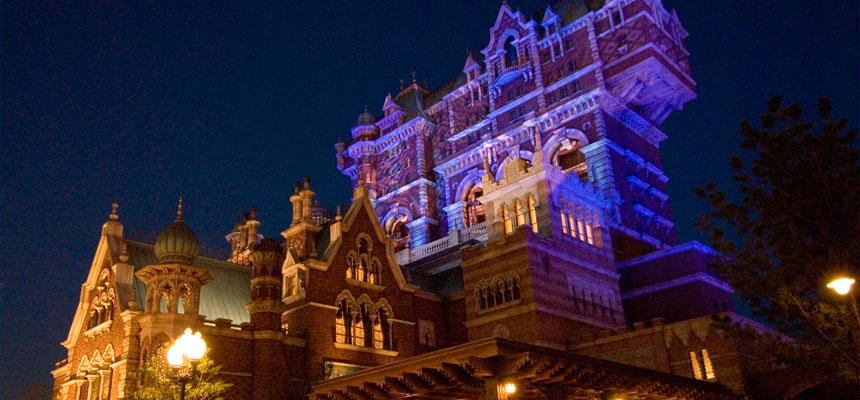
A Tower of Terror without The Twilight Zone? It’s not just possible; it’s the basis of a ride that tops the “Imagineering Bucket Lists” of many Disney Parks enthusiasts. In our HERE & THERE collection, we introduced the two Tower of Terror ride models out there (the ‘original’ and the ‘DCA model’), explored their layouts and operations, and alluded to the latter’s use in Tokyo.
Though Tokyo Disney Resort’s owners – the Oriental Land Company – took note of the ‘DCA model’ of the Tower of Terror that offered a reliable, high-capacity, easily-duplicated, and relatively inexpensive drop ride (versus the very costly and customized Disney World original), merely cloning the ride from California wouldn’t work. The story of the Hollywood Tower Hotel wouldn’t fit in Tokyo DisneySea, and The Twilight Zone had practically no name recognition in Japan. So instead, Imagineers invented the Modern Marvel: Tower of Terror, reskinning the ride system to tell a whole new tale altogether.
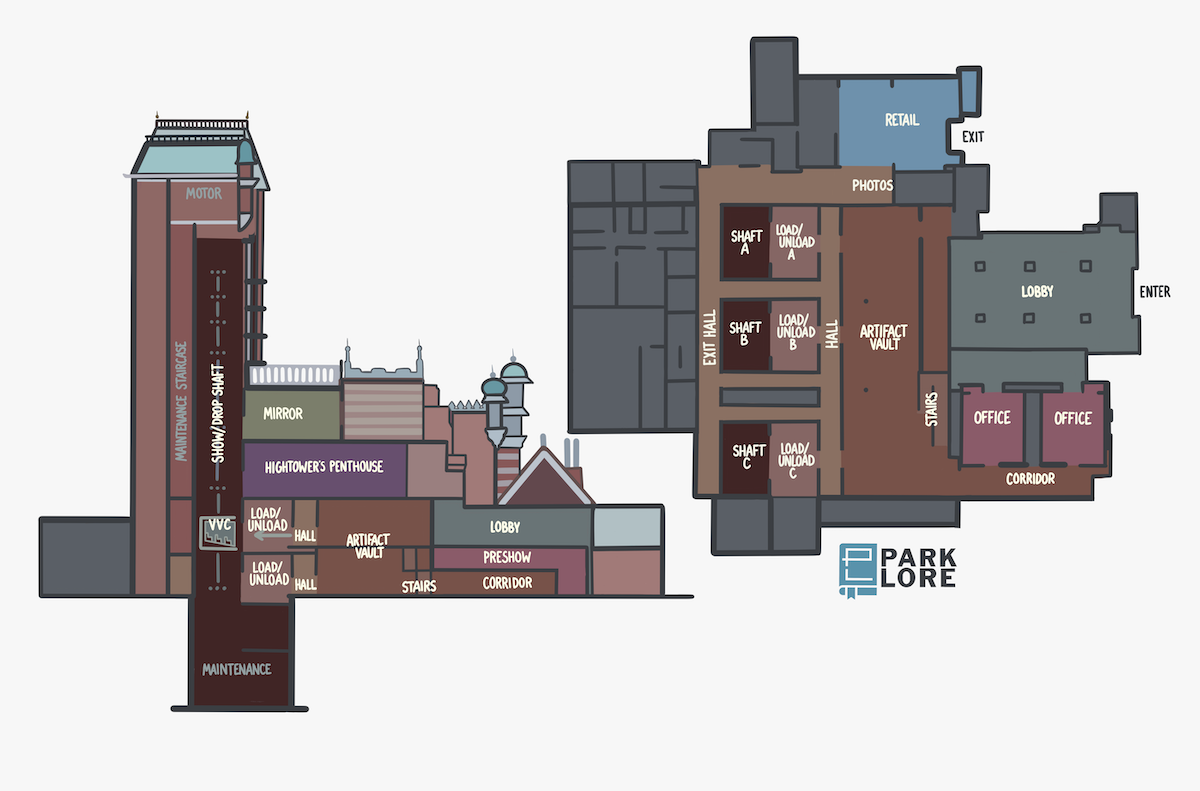
Set in the park’s American Waterfront (a 1910s New York City), the crumbling remains of the Hightower Hotel loom over New York Harbor. It’s a beautiful Moorish revival structure of extremes: gorgeous domes, marble minarets, oxidized roofs, and shattered windows. To save this historic structure from the wrecking ball, the New York Preservation Society is running tours of the supposedly-cursed hotel with an attention-grabbing nickname… yep: “The Tower of Terror.”
The tour continues through the personal office of globetrotter, unrepentant art thief, and S.E.A. miscreant Harrison Hightower, where stained glass windows recount the goings-on of New Years Eve 1899 when Hightower’s newest stolen artifact – an idol called Shiriki Utundu – turned on him, cutting his ride to the penthouse short. The “Boiler Room” is reimagined as a two-story vault filled with Hightower’s pilfered treasures, with tapestries and paintings sliding away to reveal hidden elevators (a smart way to excuse the infamous “Hallway” between loading and the elevator that the ‘DCA model’ requires.
Filled with sensational special effects, the ride redresses every inch of the “Hollywood Tower Hotel” skeleton into a one-of-a-kind attraction that makes the “budget” ride model feel like a headliner… (Which is why our Ideal, Built-Out version of California Adventure would lay this show overtop of its existing tower…)
4. Rock ‘n’ Roller Coaster
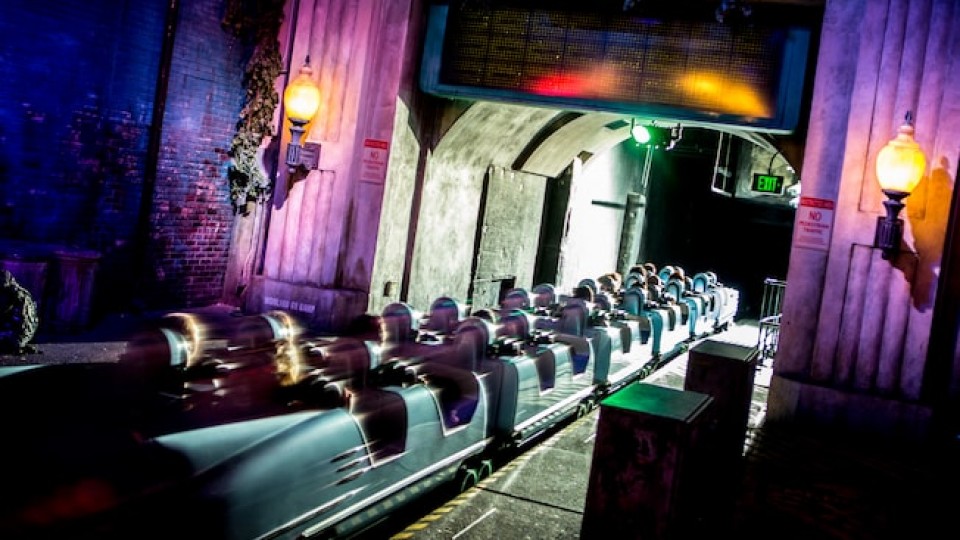
A 1996 innovation by roller coaster manufacturer Premier Rides introduced a whole new technology for launching coasters: linear induction motors (LIMs). Using electro-magnetism rather than friction-based winches, flywheels, and catapults of old, LIM technology premiered on a pair of roller coasters cloned at Paramount’s Kings Island and Kings Dominion called The Outer Limits: Flight of Fear. Those rides sent guests launching down an enclosed corridor into a massive showbuilding containing a tangled “spaghetti bowl” of intertwining, convoluted track.
It was a bold new technology, and a compelling ride layout that included a high-speed launch, a sudden “reveal” of the entangled track, and three inversions. Disney’s go-to coaster manufacturer, Vekoma, took note and backwards-engineered their own take on the Flight of Fear concept – a launched straightaway into a twisted coil of inverting track. Disney bought one.
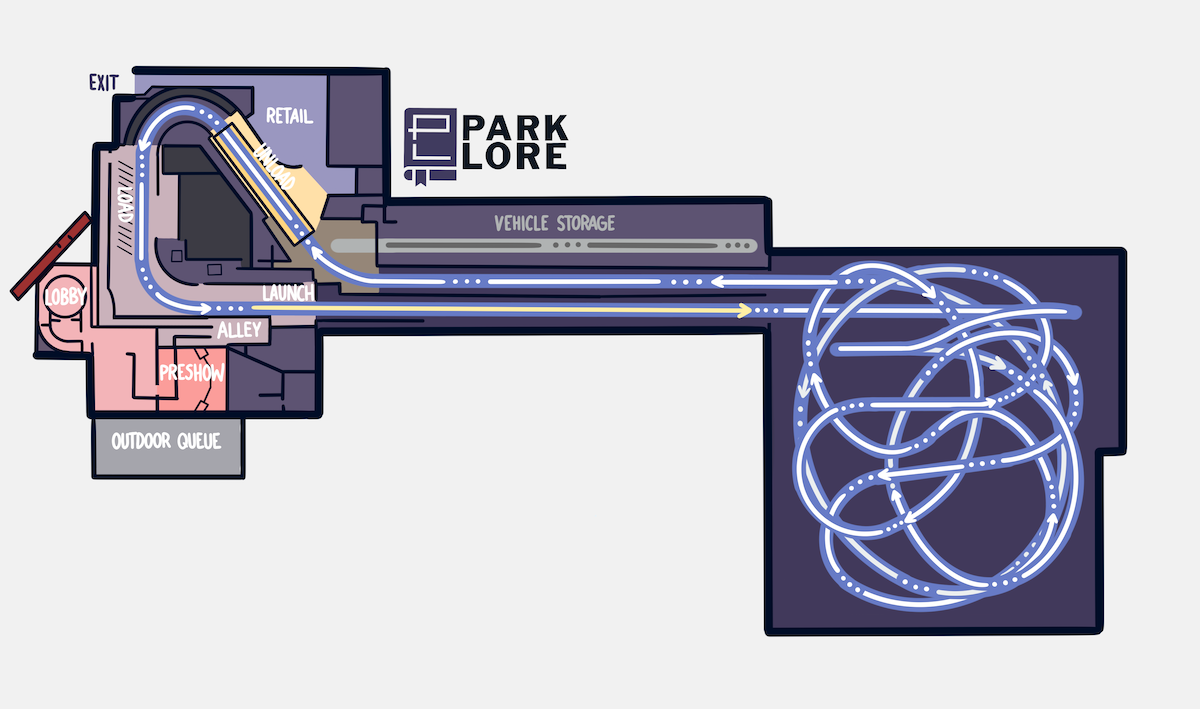
Opening in 1999, Rock ‘n’ Roller Coaster was the first stateside Disney attraction to turn guests upside down. (The first outside of the United States was Indiana Jones et le Temple du Péril at Disneyland Paris which opened in 1993 with a single vertical loop.) The ride is by far the most intense roller coaster at Walt Disney World (though it’s not the fastest ride – that would be TEST TRACK), and is probably tied with Disneyland Paris’ Space Mountain (also with three inversions) for the most intense Disney roller coaster worldwide.
It’s also not really one-of-a-kind. Disney built a second copy of Rock ‘n’ Roller Coaster at Walt Disney Studios Park in Paris, but replaced the blacklight cutouts with a much more creative, abstract, concert-like light show. However, the French version of the ride got an Avengers overlay as part of the park’s new Avengers Campus in 2022, becoming Avengers Assemble: Flight Force.
Interestingly, Vekoma also offers the ride model for purchase out of a catalogue, and Six Flags Holland (today, Walibi Holland) bought one. So if you’ve ever wanted to see what Rock ‘n’ Roller Coaster would look like without the box around it, enjoy!
